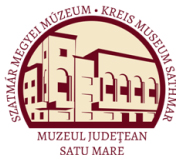Marta, Liviu: The Late Bronze Age Settlements of Petea-Csengersima (Satu Mare, 2009)
VI. Annexes
SIO Complex 4 (Fig. 3, 6) - A pit that contained an amphora. The pit had dark-grey fill, and the outline was oval (70 x 80 cm in diameter). The walls were vertical and cut the sterile soil in 13 cm in depth. It had flat base. An amphora in situ was found in the upper part of the cultural layer, and its shape could be defined only in the sterile soil (100 cm). Another amphora was laid standing on the base of the pit (PI. 13). The fragments of the upper part of the amphora were found in the cultural layer, 10 cm above the level of the pit outline, and a part of the fragments were scattered in the vegetal layer, likely as a result of tilling. Date/culture: Suciu de Sus. Pottery shape PasteDecoration type Pottery type No. of eletnents Plate amphora s MG,KE,I<F,ME,NA,NB,|C 1 1 13 SIO Complex 5 (Fig. 3, 6) — The base of a pit was found in the upper part of the cultural layer (80 cm in depth). Many broken pottery shards were laid around the vessel they originated from, which was also likely that was broken by the tilling equipment. The vessel was in standing position, in 95 cm depth, and 8 cm above the sterile soil. The deposition pit couldn't be defined. Together with the pot made of coarse paste were present 6 pottery fragments from other vessels and a small animal bone. Not assigned to an archaeological culture. Pottery shape Paste Decoration type Pottery typeNo. of elements Plate pot s 1 12/13 510 Complex 6 (Fig. 3, 6) — A hearth was found in 80 cm depth in the cultural layer, in an area varying from 75 cm to 90 cm in depth. It is likely that the hearth belonged to a dwelling because many daub fragments were found in the area, forming a platform of 215 x 200 cm. The hearth was oval (67 x 88 cm) and was 3 cm thick. Not assigned to an archaeological culture. Sector Sll (36 x 3 m, 108 m2, Fig. 3) 511 Complex 1 (Fig. 3, 6) - A pit was laid in the confines of the sector and thus it was partially excavated and had irregular outline (86 x 100 cm). It was defined at the base of the cultural layer (91 cm deep). In the centre, it was circular and had 84 cm in diameter. The walls were steeply inclined towards the inside and the base was flat. The pit was filled with daub. Inventory: 6 pottery shards from a light brown vessel among the daub pieces. Not assigned to an archaeological culture. Sll Complex 2 (Fig. 3, 6) — Pottery fragments and a daub deposition occurred in the cultural layer, in 88 cm depth. The deposition cut 15 cm into the sterile layer, and as deep as 100 cm it appeared like a rectangular pit (100 x 130 cm). A bowl was laid on the slightly inclined, flat base. The dark grey fill contained much charcoal. Inventory: a complete bowl, 32 pottery fragments (some of them were refired to vitrification), a bone and a grinding stone fragment. The pottery fragments originated from other 7 vessels. Date/culture: Lăpuş II—Gáva I. Pottery shape Paste Decoration type Pottery type No. of elements Plate dish f AG IBa 1 14/4 amphora f HB,CA,GI 3B 1 14/5 cup f GD,IA 4 1 14/6 dish s 2Ab 1 14/7 cup s lAb 1 14/8 s AB 1-c AB 1 amphora f BG 1 p. cooking v.c KA 1 cup s 3 1 14/9 Sll Complex 3 (Fig. 3, 6) — A pit was pardally excavated and had arched outline (113 x 154 cm). It was delimited in the sterile soil which it cut in 10—30 cm. The base was irregular and the fill was grey. Inventory: 26 pottery fragments that originated from 9-12 vessels. Not assigned to an archaeological culture.
